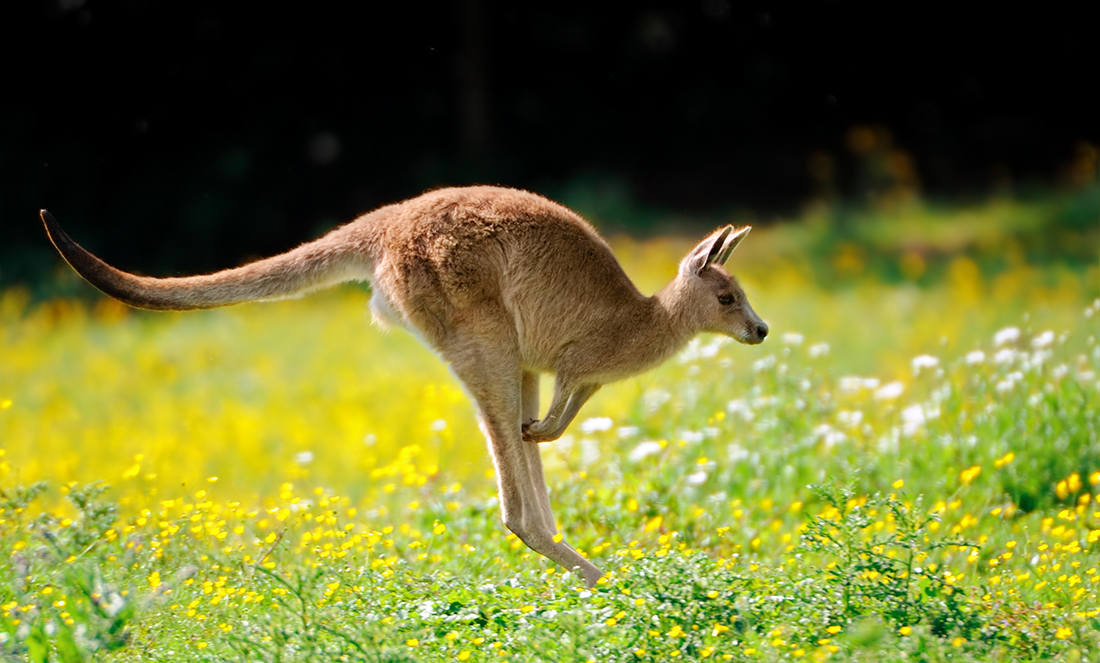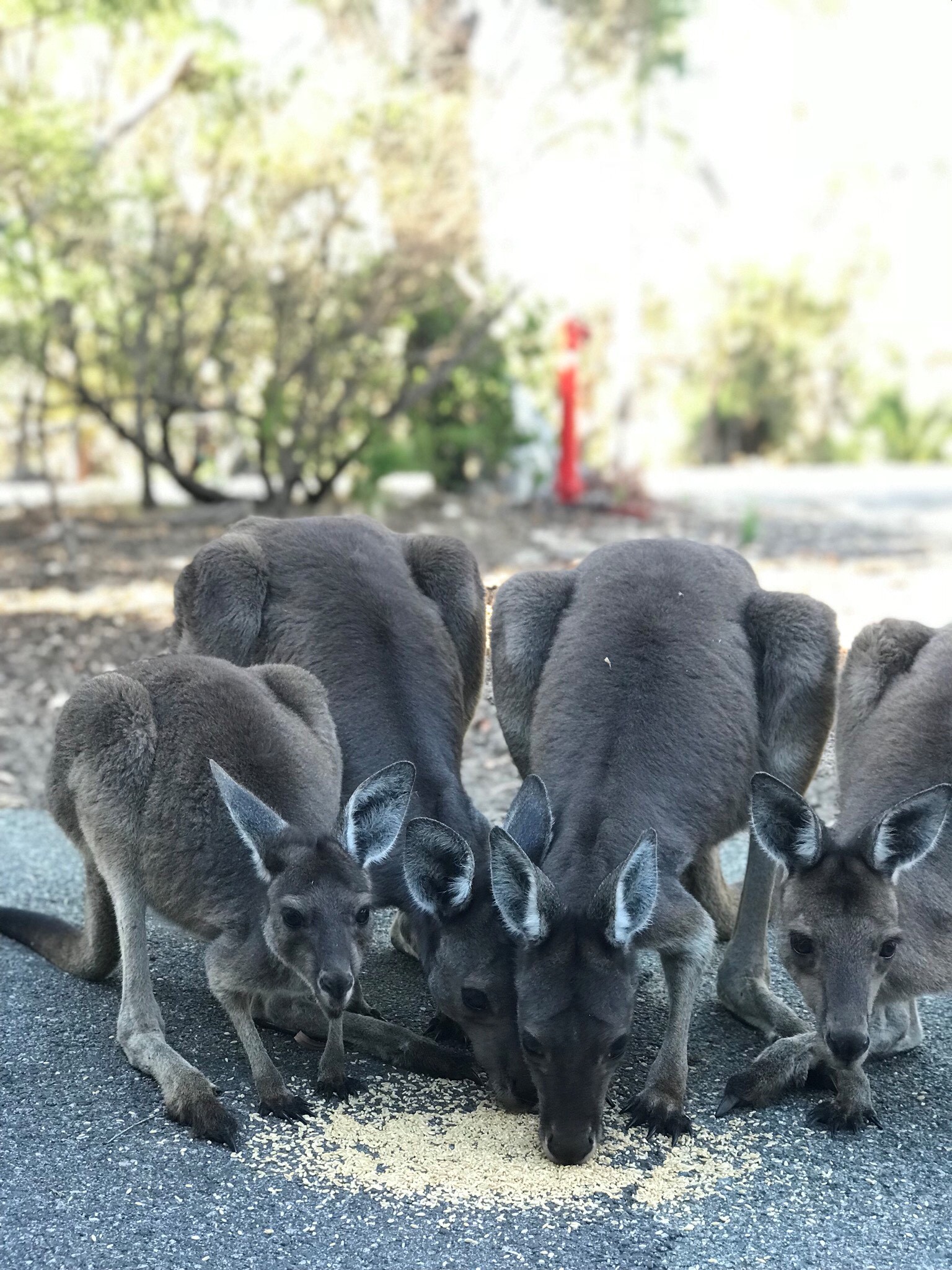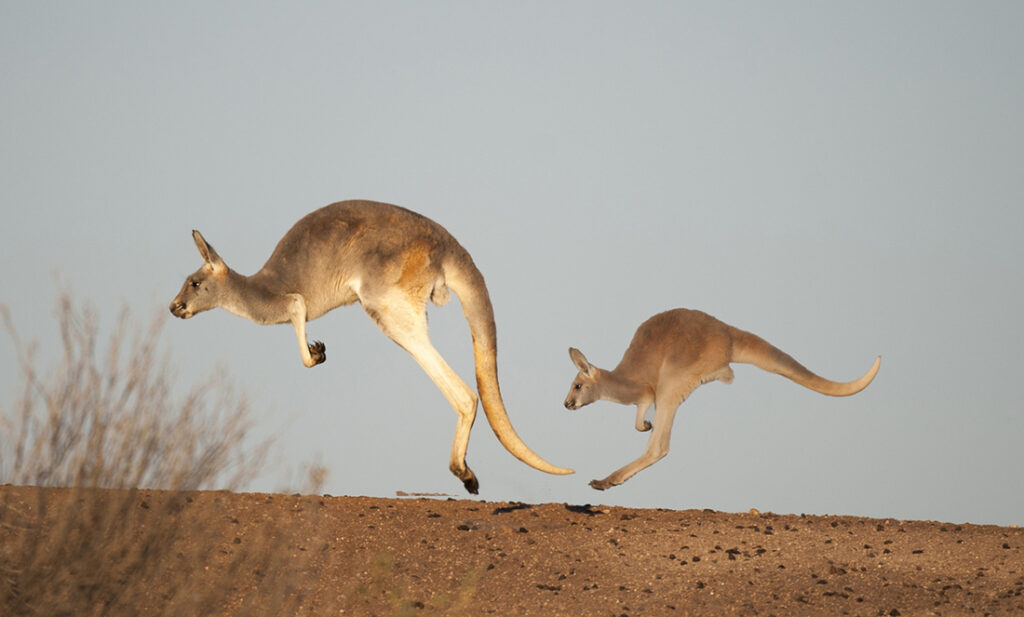Could learning how kangaroos breathe while they hop to provide a leap to new discoveries?
UWA PhD student James Wong is hoping it can, with a project that will work closely with our national emblem.
He’ll image their lungs with MRI and CT scans at the Harry Perkins Institute of Medical Research and hopes to measure the airflow as they hop with custom-fitted breathing masks.
It might be basic science, but James sees the potential for a crucial scientific breakthrough in the field of respiratory physiology.
A FLIGHT FROM WONDER
It was Einstein who said the process of scientific discovery is a “continual flight from wonder”.
Three years ago, James’s project took flight when he and his supervisor wondered how do kangaroos breathe while they hop?
It is thought that kangaroos’ hopping actually helps to facilitate their breathing.

He says you can think of the chest as the barrel of a syringe and the guts as the plunger.
As a kangaroo hops off, the inertia of the guts helps to draw air into its lungs, just as the plunger pulls air into a syringe.
When the kangaroo lands, the guts crash into the diaphragm to push the air out.
“If you hop, you can actually feel some of your air being pushed out,” James says.
“But for kangaroos, they reach hopping speeds of 40 to 60 kilometres an hour, so that’s a lot of hopping force.”
“All this force could be applied to the lungs and the airways.”
X-RAY VISION INTO KANGAROO LUNGS
James is using the advanced imaging techniques to study the structure of kangaroo lungs.
Data collected will be combined with mathematical modelling to assess if kangaroos do in fact breathe with this unique hopping mechanism.
HOP, SKIP AND A JUMP TO NEW KNOWLEDGE
You might think this all sounds hopping mad.
But James works in a niche lab focused on examining how mechanical and structural abnormalities in respiratory disease makes it harder to breathe.
The project aims to understand if there are any structural or functional changes to kangaroo lungs and airways to accommodate these large forces.
James says it would provide new knowledge on how the kangaroo airways constrict and expand while hopping.
“If we understand more about function in a species that behaves a little differently, maybe we can understand the significance of changes observed in disease,” he says.
James says medical breakthroughs have come about in the past because of studies on the unique features of animals.
“One example is with hibernating bears,” he says.
“Imagine sleeping all day, every day. While that would be the dream, it will get to a point where your muscles start to waste away.
“Unfortunately, that is what happens with coma patients.
“But if we think back to the hibernating bear, they wake up just as strong as before.
“So by studying what is unique in the bear to prevent muscle wasting, we can potentially understand more about how muscle wasting works.
“Likewise, kangaroos could help us understand the structural and functional changes we see in diseases such as asthma and chronic obstructive pulmonary disease.”
James Wong participated in FameLab, a British Council science communication competition that aims to discover charismatic early career STEM researchers who have the potential to inspire people to make them see the world from new perspectives.
James was the runner up and took out the people’s choice award in the West Australian final of the competition.











